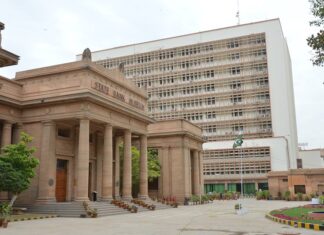The government is obsessed with fixing prices, whether that be of the most basic staples, fuel, or medicine – it wants to meddle in the market, and thereby disrupt supply chains in the process. Thousands of years of evidence clearly demonstrates that price fixing never works, and often results in shortages, or creation of an informal market, that hurts consumer welfare.
Pharmaceutical products have complex supply chains. Most raw material is imported, and thereby remains susceptible to depreciation of the PKR. Processing is done locally, and that is susceptible to changes in overall cost of doing business, whether that be electricity prices, or inflation, etc. Product pricing is a mix of all these factors, after adding on top a margin – the latter being a function of competition in the market.
Over the last two years, the PKR has depreciated by more than 70 percent, whereas compounded inflation has been in excess of 40 percent. As the cost of production increases, it makes logical sense to increase prices to at least cover for such costs. However, if the price is fixed by the government, and price reviews are done at the highest level of the government on an ad-hoc basis, then the pricing strategy completely fails. If a price remains lower, or even at cost of production and distribution, then there is no economic incentive for medicine to be produced. Such a scenario leads to reduction in production, eventually resulting in shortages across the board. As shortages increase, an informal market develops, wherein medicines are sold at a considerable premium, or are of dubious quality, since the gray market starts actively supplying the same.
It is estimated that more than 1,200 pharmaceutical products stopped production because it did not make any economic sense to continue producing products at a loss. If we look at production level data, over the last two years, production of tablets dropped by 25 percent, whereas the production of syrups dropped by 17 percent. This is in an environment where the population continues to grow, resulting in significant contraction in availability of medicine on a per capita basis. As production stopped, so did production units, resulting in loss of jobs. Due to a classic policy error of fixing prices, not only did the consumer lose out, but employment also got decimated. In simpler terms, slightly expensive medicine is better than no medicine.
An unintended consequence of fixing prices is a signal that is sent to the market that discourages investment. It makes no sense to invest in a sector where the producer does not have any pricing power. This has resulted in significant divestment from the sector given lack of growth opportunities due to a restrictive, and anti-competitive regulatory environment. As our population continues to grow at one of the highest rates in the world, we need more investment in the healthcare sector, and not less. Policy measures that actually lead to divestment, rather than investment harm the long-term healthcare prospects of the country’s population.
There is an argument that if prices are not fixed then that may lead to price gouging. It is essential to understand that price gouging can only exist if a market is not competitive. It is the responsibility of the government, and the regulator to create an enabling environment for a competitive market. The government should only be in the business of providing an enabling environment, and ensuring stringent quality controls. Creating an environment where there is more investment in the sector, such that we not only meet local demand, but also develop backward integration through investment along the pharmaceutical value chain is critical for long-term sustenance, and growth of the healthcare segment.
Investment in backward linkages can potentially insulate pricing from depreciation of PKR while also enabling price stability. If the government wants price stability, and if it wants medicine prices to actually reduce in real terms, it needs to create a more competitive market, and we can never have a competitive market with consistently debunked notions of price caps.








Evidence from thousands of years shows unequivocally that price fixing never works and frequently leads to shortages or the emergence of an unofficial market that harms consumer welfare.
Thousands of years of history prove beyond a reasonable doubt that attempts to regulate prices always backfire, either by creating artificial shortages or giving rise to an underground trade system that undermines consumer welfare.
Taking action to address the pharmaceutical pricing crisis is necessary, but it should be done with a comprehensive understanding of the complex supply chains involved and consideration for market dynamics.
Local processing, a critical step in the pharmaceutical supply chain, is subject to changes in the overall cost of doing business.
Great post! I really enjoyed reading your insights and the way you presented your ideas was clear and engaging. Thank you for sharing your knowledge and perspective with us.
Thank you so much for sharing this interesting idea. The views in the article are extremely insightful and factual. I like it very much. Hope you will continue to have more articles like this.